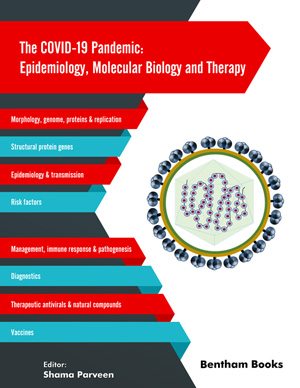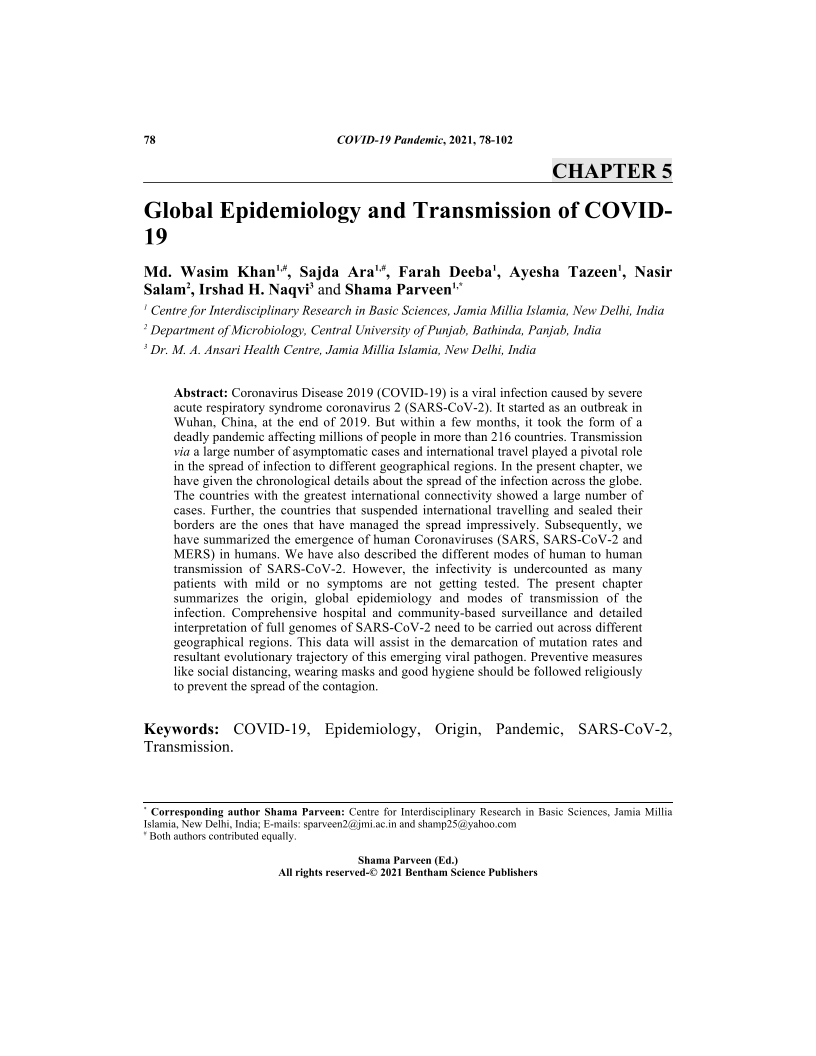Global Epidemiology and Transmission of COVID- 19

- Authors: Md. Wasim Khan1, Sajda Ara2, Farah Deeba3, Ayesha Tazeen4, Nasir Salam5, Irshad H. Naqvi6, Shama Parveen7
-
View Affiliations Hide Affiliations1 "Centre for Interdisciplinary Research in Basic Sciences, Jamia Millia Islamia, New Delhi, India 2 "Centre for Interdisciplinary Research in Basic Sciences, Jamia Millia Islamia, New Delhi, India 3 "Centre for Interdisciplinary Research in Basic Sciences, Jamia Millia Islamia, New Delhi, India 4 "Centre for Interdisciplinary Research in Basic Sciences, Jamia Millia Islamia, New Delhi, India 5 "Department of Microbiology, Central University of Punjab, Bathinda, Panjab, India 6 Dr. M. A. Ansari Health Centre, Jamia Millia Islamia, New Delhi, India 7 Centre for Interdisciplinary Research in Basic Sciences, Jamia Millia Islamia, New Delhi, India
- Source: The COVID-19 Pandemic: Epidemiology, Molecular Biology and Therapy , pp 78-102
- Publication Date: February 2021
- Language: English
Global Epidemiology and Transmission of COVID- 19, Page 1 of 1
< Previous page | Next page > /docserver/preview/fulltext/9789811481871/chapter-5-1.gif
Coronavirus Disease 2019 (COVID-19) is a viral infection caused by severe acute respiratory syndrome coronavirus 2 (SARS-CoV-2). It started as an outbreak in Wuhan, China, at the end of 2019. But within a few months, it took the form of a deadly pandemic affecting millions of people in more than 216 countries. Transmission via a large number of asymptomatic cases and international travel played a pivotal role in the spread of infection to different geographical regions. In the present chapter, we have given the chronological details about the spread of the infection across the globe. The countries with the greatest international connectivity showed a large number of cases. Further, the countries that suspended international travelling and sealed their borders are the ones that have managed the spread impressively. Subsequently, we have summarized the emergence of human Coronaviruses (SARS, SARS-CoV-2 and MERS) in humans. We have also described the different modes of human to human transmission of SARS-CoV-2. However, the infectivity is undercounted as many patients with mild or no symptoms are not getting tested. The present chapter summarizes the origin, global epidemiology and modes of transmission of the infection. Comprehensive hospital and community-based surveillance and detailed interpretation of full genomes of SARS-CoV-2 need to be carried out across different geographical regions. This data will assist in the demarcation of mutation rates and resultant evolutionary trajectory of this emerging viral pathogen. Preventive measures like social distancing, wearing masks and good hygiene should be followed religiously to prevent the spread of the contagion.
-
From This Site
/content/books/9789811481871.chapter-5dcterms_subject,pub_keyword-contentType:Journal -contentType:Figure -contentType:Table -contentType:SupplementaryData105

